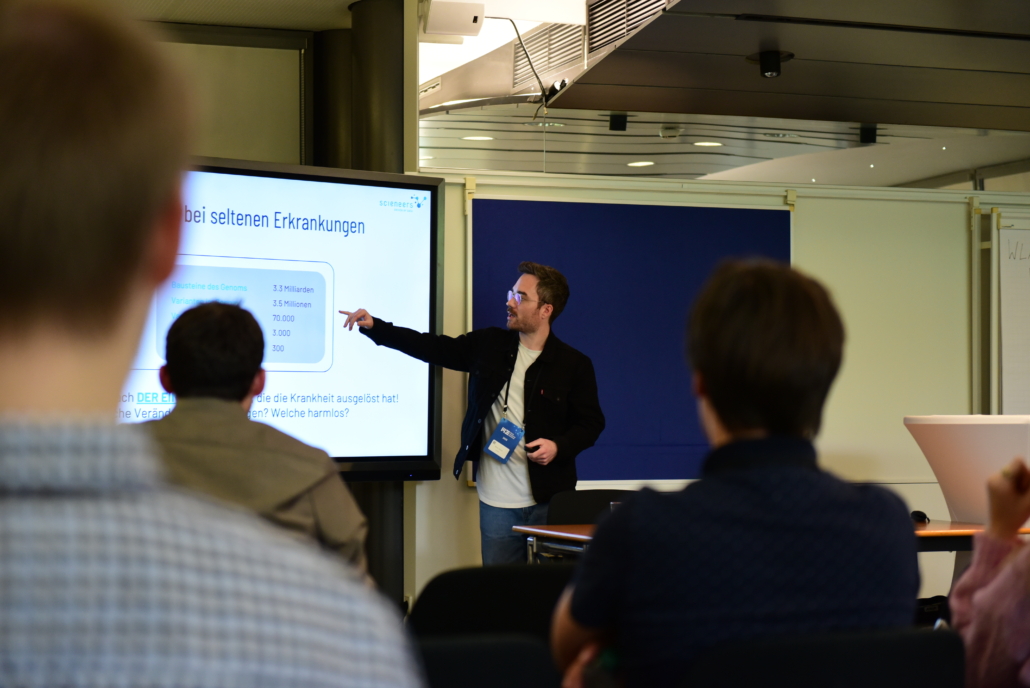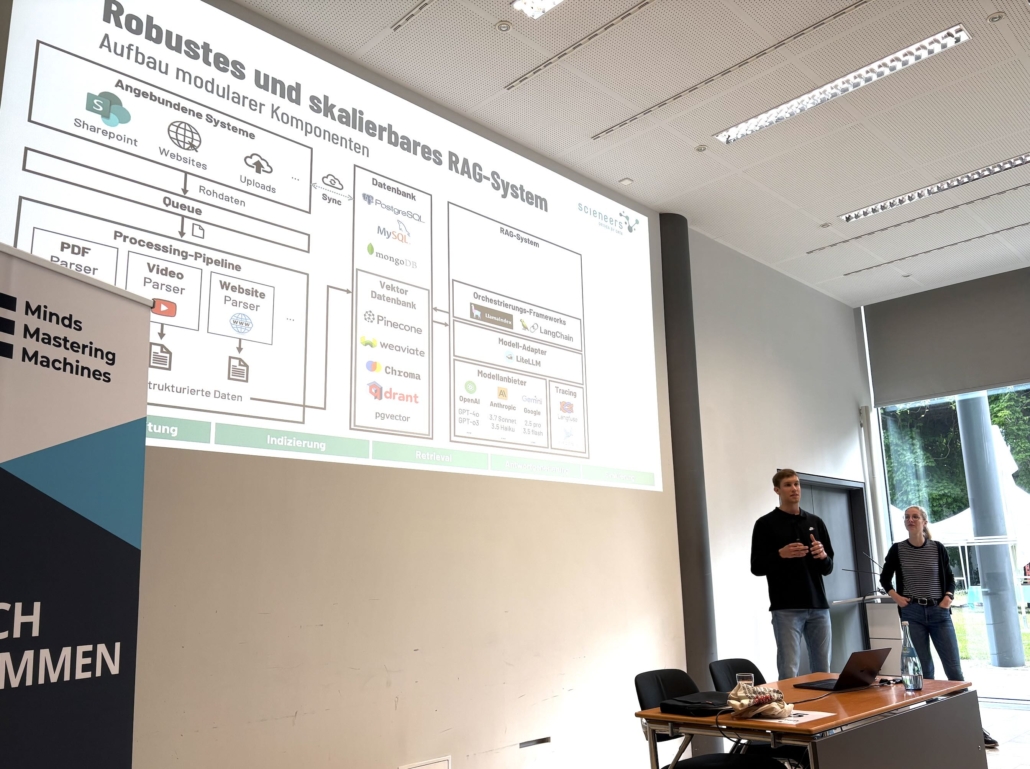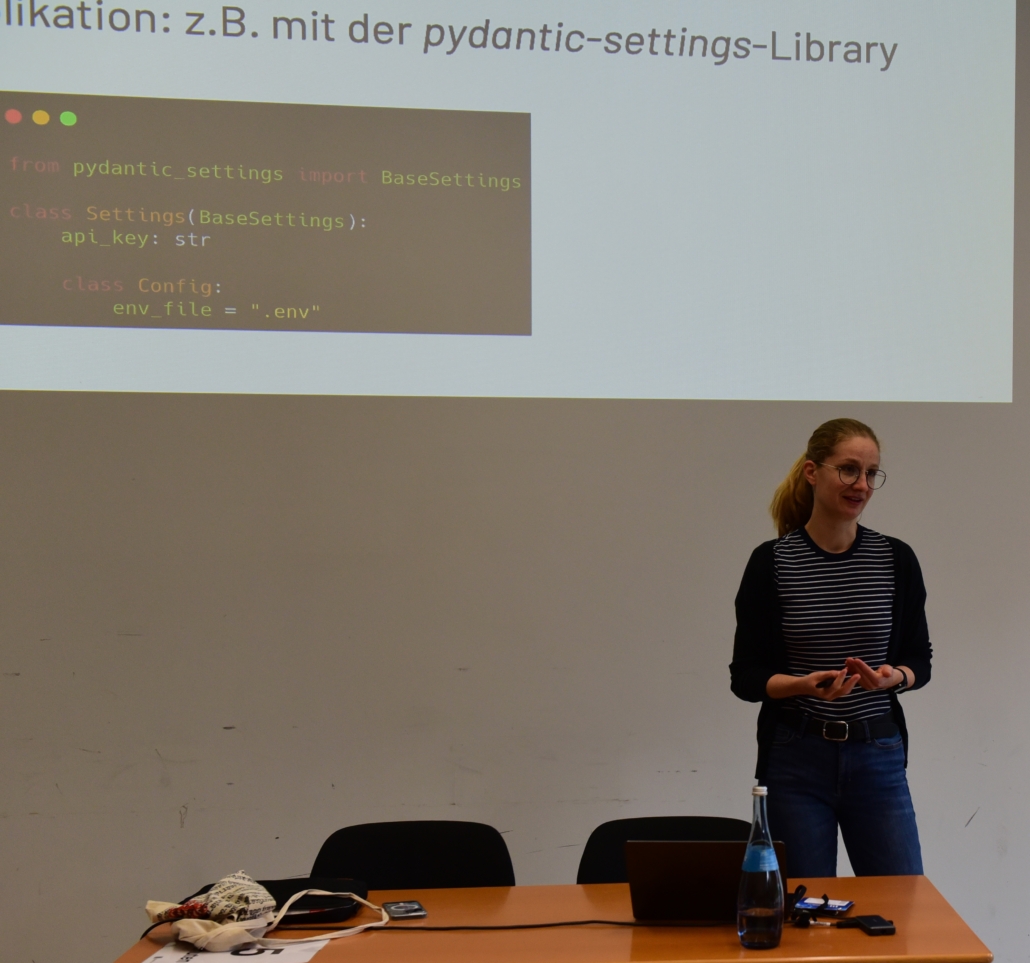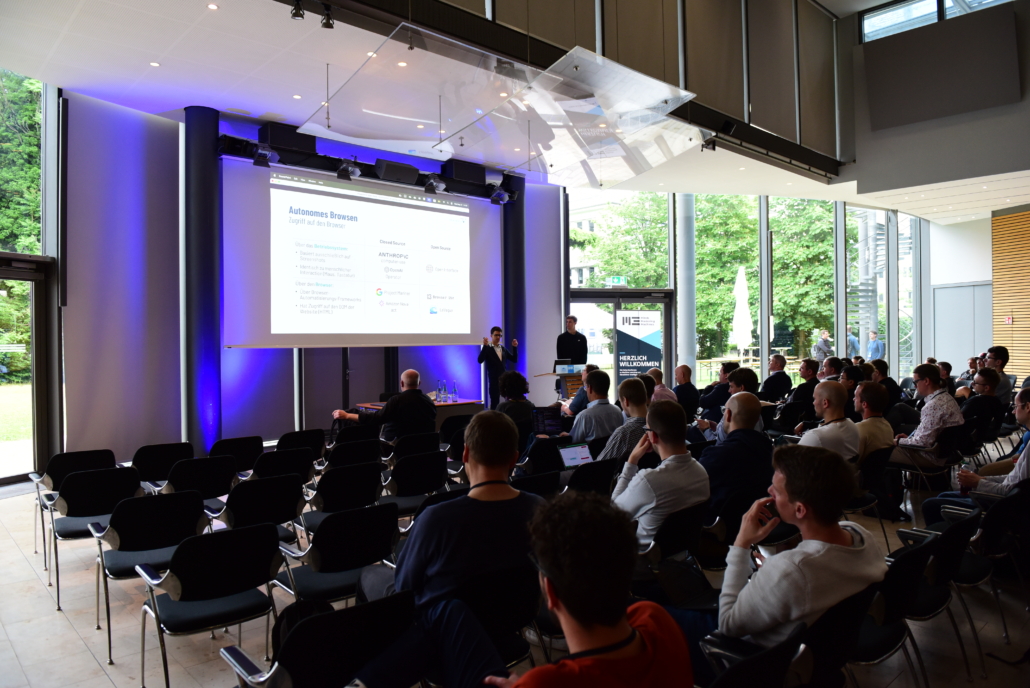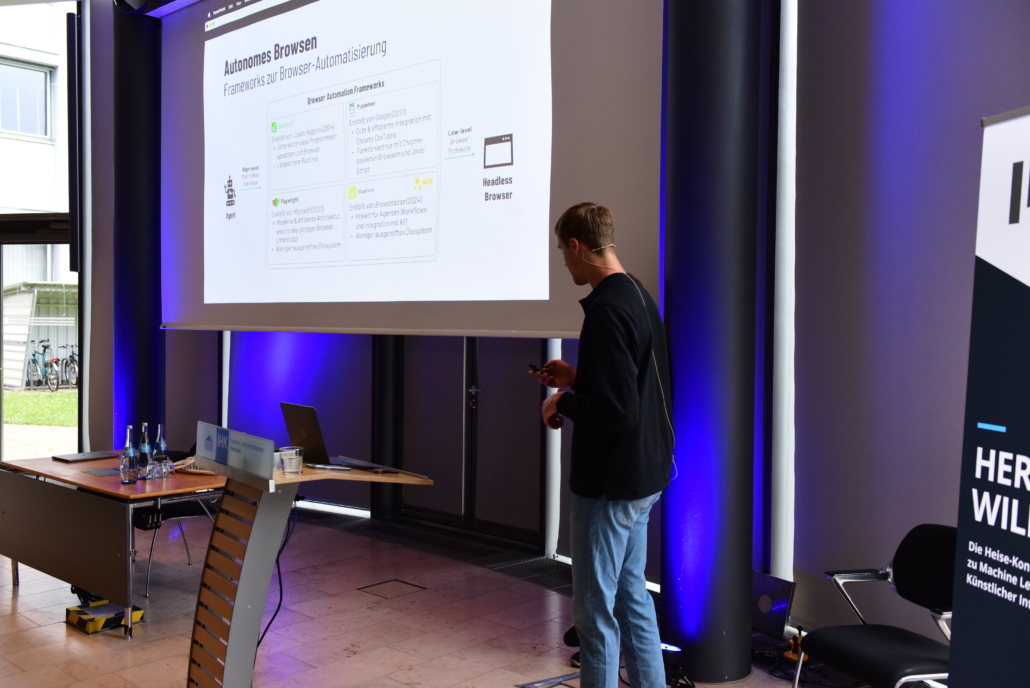Minds Mastering Machines 2025
The Machine Learning (ML) and Artificial Intelligence (AI) conference
Every spring, scieneers gives several presentations at the Minds Mastering Machines (M3) conference. This year’s conference on data science, data engineering, and generative AI was held in Karlsruhe. The conference naturally focused on LLMs with numerous advances in agents, RAG, MCP, and LLMOps. But traditional machine learning and data management also played a role. And rightly so, because even in the age of GenAI, a solid database is crucial.
This year, we were able to contribute three presentations on different topics.
First, on Tuesday, Martin Danner gave new insights into clinical decision making. On Wednesday, Alina Dallmann and Arne Grobrügge discussed developing robust and scalable RAG systems, followed by Arne Grobrügge and Nico Kreiling on autonomous browsing with large action models.
Clinical decision making
with AlphaFold and graph neural networks
Martin at the presentation on clinical decision making with AlphaFold and graph neural networks
Genetic changes, such as missense variants, can cause serious diseases and are often difficult to assess. In his presentation, Martin Danner from scieneers, in collaboration with the University Hospital of RWTH Aachen, Germany, explained how modern AI methods help to overcome this challenge – the search for the disease-causing “needle in a haystack”.
Modern AI models such as AlphaFold, which won the Nobel Prize in Chemistry in 2024, can accurately predict protein structures, including variants. Martin showed how this structural information is processed with graph neural networks to generate meaningful embeddings. These embeddings are essential features in pathogenicity prediction models to improve the prioritisation of genetic variants.
This ‘Structure Enriched Pathogenicity Prediction‘ approach demonstrated how integrating structural information, enabled by AlphaFold and graph AI models, can significantly improve pathogenicity prediction. Specific results showed that this enhances the prioritisation of relevant variants. These advances are critical for faster and more accurate diagnosis of rare diseases and an essential step towards personalised medicine.
The slides to browse through
Development of robust & scalable RAG systems
Lessons learned from five use cases
Alina and Arne giving a talk on building robust & scalable RAG systems
Retrieval Augmented Generation (RAG) is probably the most popular way of using language models in companies and opens up a wide range of possible applications. In their presentation, Alina Dallmann and Arne Grobrügge shared their experiences of developing and operating RAG systems in five different use cases. The focus was on the technical and application challenges of creating robust and scalable systems.
They presented the development of a modular core system based on open source libraries that can be flexibly adapted to different use cases. A key topic was scalable deployment using Infrastructure-as-Code (IaC), such as Terraform, to ensure an efficient and repeatable infrastructure that can handle growing data volumes and peak loads.
The presentation also highlighted practical challenges and lessons learned, such as the generalisability of prompts across different models, the importance of checking the relevance of retrieval results to avoid hallucinations, and the difficulty of implementing correct source citation. In addition, evaluation methods were presented to assess the quality of responses both quantitatively and qualitatively. The aim was to provide practical insights and solutions for the efficient, robust and future-proof implementation of RAG systems in organisations.
The slides to browse through
Autonomous browsing
with Large Action Models aka LLM-Agents
Arne and Nico talking about autonomous browsing with large action models
Can AI run the browser autonomously? Insights into automating complex web tasks
The browser is our gateway to the web, the most extensive knowledge repository and marketplace in human history. But can large language models (LLMs) work with it autonomously and handle complex processes online? In their presentation, Nico Kreiling and Arne Grobrügge from Scieneers gave insight into the world of autonomous browsing and the possibilities of LLM agents solving tasks through direct computer interaction.
The presentation focused on a project to automate a complex online process. The aim is to create a functionality that enables agents to navigate any website and perform the necessary steps, completely autonomously and with high quality. This requires technical access to the browser via the operating system (based on screenshots) or browser automation frameworks such as Selenium or Playwright, which can access the page’s HTML code. Scieneers opted for an open source approach based on frameworks such as LaVague and Browser-Use. A key factor was careful prompt engineering for the control engine to give the agent clear guidelines and context for web interaction.
In the final live demo, the audience could see the agent navigate the website independently, filling in input fields, using the file upload, and selecting items from drop-down menus, to finally reach its destination after 50 iterations.
The slides to browse through
Our impressions of the M3 2025
This year’s M3 was an exciting mix of GenAI and classic ML topics. While the LLM presentations focused on best practices in engineering, safety and maintenance, there were many practical examples from classic ML, ranging from medical technology and sports analysis to road damage detection.
We want to thank all participants for their exciting presentations and suggestions, and look forward to next year!
Autoren
Martin Danner, Data Scientist at scieneers GmbH
martin.danner@scieneers.de
Alina Dallmann, Data Scieneer at scieneers GmbH
alina.dallmann@scieneers.de
Arne Grobrügge, Data Scientist at scieneers GmbH
arne.grobruegge@scieneers.de
Nico Kreiling, Data Scientist at scieneers GmbH
nico.kreiling@scieneers.de

